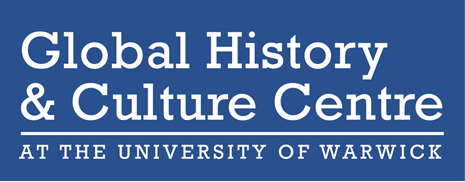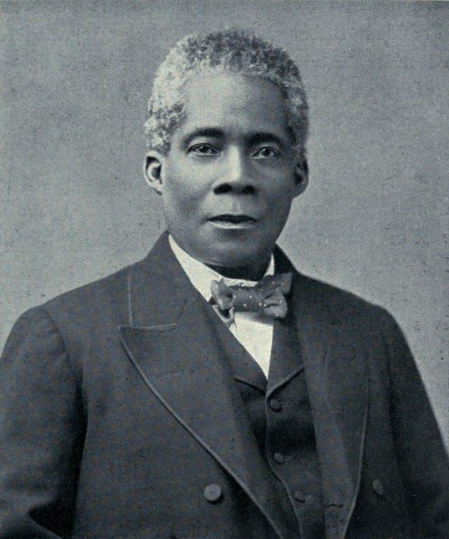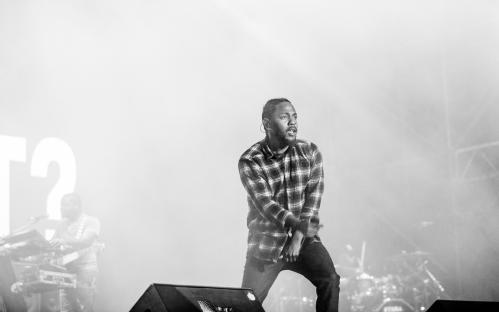‘When the four corners of this cocoon collide’: A Brief Global Overview of Pan-Africanism, 1788-Present
Published: 19 April 2021 - Jack Bowman
‘Bury me in the ocean, with my ancestors that jumped from the ships, because they knew death was better than bondage.’[1] These are the powerful final words spoken by anti-hero Erik Killmonger in Ryan Coogler’s Black Panther (2018). Although a Marvel action movie Black Panther engages with deeper and more pertinent themes than the usual superhero flick. It is a Pan-African work of art grounded in a rich history, and draws on a wealth of Black talent from the soundtrack and actors to writers and director.[2] Coogler’s film is a medley of Black talent, culture, history, and voices. It, like Pan-Africanism itself, is a product of the four corners of the globe, the fours corners of this cocoon, colliding.
For example the soundtrack was made by visionary rapper Kendrick Lamar. Lamar was the obvious choice for a film grounded, knowingly or not, in Pan-African thought. For Lamar this was the follow-up to his Pulitzer Prize winning album DAMN. (2017), the first non-jazz or classical piece to ever win the award. His previous album, To Pimp a Butterfly (2015), heralded as one of the greatest albums of the decade, and indeed all-time, is a similarly Pan-African project. The album was written after a trip to South Africa which had a significant impact on Lamar, as he put it: ‘I felt like I belonged in Africa.’[3]

Photo of Kendrick Lamar, 2017. (Kenny Sun from Boston, CC BY 2.0 via Wikimedia Commons)
Both these recent projects speak to a wider trend in popular culture, be it movies, music, books, or otherwise: that is the reframing and resurgence of Pan-African ideas. Pan-African ideas are not new but rather, they have been evolving for centuries. Indeed, Pan-Africanism as an idea can be traced as far back as the beginnings of slavery. The first movement that can be seen as Pan-African was the Sons of Africa group.[4] This abolitionist movement of the late eighteenth century had members which included former enslaved men such as Olaudah Equiano. Equiano was originally from the Kingdom of Benin and bought his freedom in 1766 before becoming a vocal critic of the slave trade with the release of his autobiography.[5] This coming together of African activists, albeit under the watchful eyes of white abolitionists, laid the groundwork for future Pan-African voices.
Drawing upon the Sons of Africa and later abolitionist groups, several thinkers began to envisage a wider movement, one not just grounded in abolitionism. The first explicitly Pan-African thinker of these was Edward Wilmot Blyden, born in the West Indies in 1832 but later claiming Liberian citizenship. Liberia itself was an important nation for Africans and the diaspora, claiming its Independence in 1847 and becoming one of only three free Black countries. Blyden refined ideas that would underscore the future of Pan-Africanism, such as pride in African history and culture, and his writings would influence important Pan-Africanists from W. E. B. DuBois and Marcus Garvey to George Padmore and Kwame Nkrumah.[6] Also writing around this time were J. E. Casely Hayford and Dusé Mohamed Ali, both principal figures in the early movement. Hayford was a close follower of Blyden whilst Dusé’s African Times and Orient Review was an important landmark in Pan-African publishing.
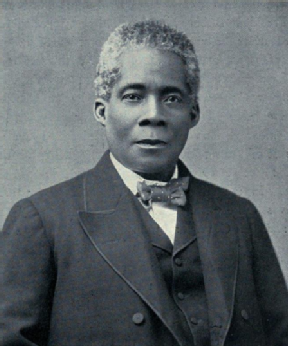
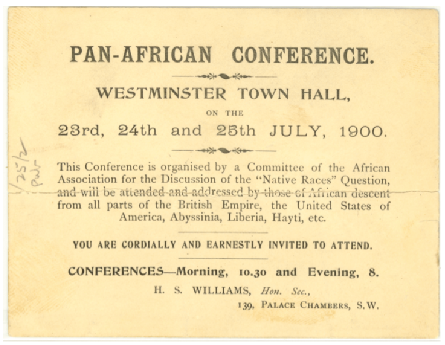
Left: Photo of Edward Wilmot Blyden, 1907. (Johnston, Harry Hamilton, Sir, 1858-1927; Royal Geographical Society (Great Britain), Public domain, via Wikimedia Commons)
Right: Photo of an invitation to the First Pan-African Conference, 1900. (Henry Sylvester Williams, Public domain, via Wikimedia Commons)
In 1900 Trinidadian lawyer Henry Sylvester Williams organised the First Pan-African Conference held in Westminster Town Hall, London, thus coining the term. As ‘father of Pan-Africanism’ W. E. B. DuBois wrote, this ‘put the word “Pan-African” in the dictionaries.’[7] DuBois was also involved in this conference and went on to organise four subsequent Pan-African Congresses. DuBois took hold of the movement, particularly in America, and was a frequent writer in a number of journals and newspapers. He was one of the founders of the NAACP and heavily involved in American racial discussions. He was primarily an academic and was later criticised by some in the movement for creating an elitist or ‘ivory tower’ organisation. This was also the beginning years of the Harlem Renaissance, an explosion of Black culture and the arts based in New York City underscored by Pan-African currents.[8]
As DuBois settled into his role in America and following Blyden’s passing in 1912, an opening for a charismatic and fresh leader had emerged. Enter Marcus Garvey. Garvey, born into a prosperous Jamaican family, had strong beliefs that Black liberation had to be accompanied and underscored by financial and institutional independence. Together with his wife Amy Ashwood he founded a number of businesses such as the Black Star Line shipping company and Universal Negro Improvement Association and African Communities League (UNIA), as well as the paper, Negro World. Although criticised for his links to the KKK and racist attacks on Jewish communities, Garvey and Garveyism, came to wield large influence over future movements such as Black Power and the Nation of Islam. Similarly UNIA continued to be a force for good having been largely set up and run by Amy Ashwood.[9]

Photo of Marcus Garvey, 1922. (Associated Press, Public domain, via Wikimedia Commons)
Following Garvey’s decline after his imprisonment, deportation from America, and eventual exile, Pan-Africanism stagnated slightly. Although DuBois was still organizing Congresses, critics pointed to the low African involvement in these events, and the prominence of white supporters. In 1934, following his expulsion from the Communist Party of the Soviet Union, a young Trinidadian journalist named George Padmore arrived in London and met up with childhood friend C. L. R. James. James was an avowed Trotskyist and influential with the British Left. Together the two would go on to be the faces of Pan-Africanism for the following two decades.
Padmore, with the help of others such as Ras Makonnen, Jomo Kenyatta, Kwame Nkrumah, and more, aimed to transform Pan-Africanism from DuBois’ intellectually inflected organisation to a broader working-class movement. From the mid-1930s to well after the Second World War, Padmore made London a hub of Pan-African activity. Future presidents of Independent African nations such as Kenyatta (Kenya) and Nkrumah (Ghana) worked with Padmore in reshaping the movement. Historians have pointed to the Fifth and final Pan-African Congress, held in Manchester in 1945, as a high-point of the movement.[10] Whilst this touchstone is a little over-worn now it does still stand as a useful barometer of the growth of Pan-Africanism.
After WWII many Pan-Africanists returned to Africa to help reshape a continent they had all but been promised by the imperial nations such as Britain and France, would be free. The lies of white imperialists were shown up almost immediately as it became clear that Indian Independence was not the watershed moment in decolonisation that had been promised during the war. So Pan-Africanism evolved once more, becoming concentrated on more national projects such as in the work of Nkrumah’s Convention People’s Party (CPP) of Ghana. In 1963 the Organisation of African Unity (OAU) was established. In doing so Nkrumah had attempted to institutionalise Pan-Africanism. Although his own CPP was increasingly being criticised internally, culminating in his overthrow in 1966, the OAU heralded a new phase once more of Pan-Africanism.

Photo of Kwame Nkrumah, 1961. (Abbie Rowe, Public domain, via Wikimedia Commons)
In the years since 1963 the OAU has continued to operate, meeting frequently and sustaining its core Pan-African principles. Although far from the imagined ‘United States of Africa’ of Garvey, or the one Africa envisioned by Blyden, the OAU still holds importance. However, it should also not been seen as the culmination of the movement, as argued by some, and is better viewed as part of the continuing evolution of Pan-Africanism that has grown and changed over the previous iterations.
Pan-Africanism is thus not a single idea, entity, or project, but rather an ever-evolving set of beliefs in constant dialogue with itself. It is also a global notion, and one that has spanned the world historically. From the West Indies and North America, to Britain and wider Europe, from West Africa and Ghana to East Africa and Kenya, Pan-Africanism has operated in a multitude of geographies. Similarly, its agents reflect this global movement, bringing ideas from all corners of the diaspora. Writing a history of Pan-Africanism that truly treats it as a living movement, an evolving organisation and a network rather than a static ideological framework or political belief system, also means writing a global history. Pan-Africanism is a product of those four walls of the cocoon colliding that Lamar opens To Pimp a Butterfly with.
Pan-Africanism is still in motion today. As we still grapple with a racist society scarred by the disgraces of empire, movements like Pan-Africanism are still essential to a continued dialogue. In a world becoming more and more fragmented, split along fractures between communities fuelled by isolationist political policy, movements like Pan-Africanism are important. The unity and celebration of Black voices, culture, and history that Pan-Africanism stands for is an apt response to our divided and racist world.
Debates about chunks of metal depicting racist embarrassments overshadow the more important questions that underscore these original debates.[11] Perhaps then, this is why the Pan-African undertones in some of today’s most influential popular culture outlets is so refreshing and important. They show how history does not have to be all dusty books and ivory-tower academia, but can infuse popular culture with meaning and importance. This balancing act is a crucial one in bringing ideas such as Pan-Africanism out of universities and into everyday conversation.
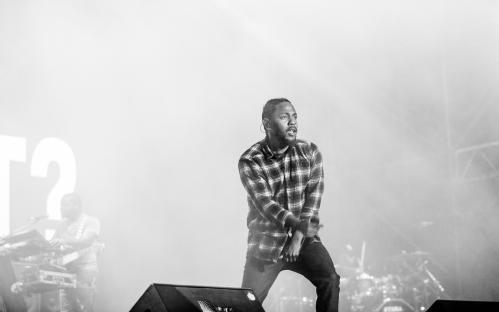
Photo of Kendrick Lamar, 2016. (Batiste Safont, CC BY-SA 4.0 via Wikimedia Commons)
For example, Black Panther can be characterised as ‘meticulously Pan-African in its use of languages, music, rituals, fashion’, but at the same time it can gross over $1 billion worldwide, and become the first superhero film to receive a Best Film nod at the Oscars.[12] To Pimp a Butterfly can reflect Lamar’s African ‘pilgrimage’ and encapsulate genres from African-American music, jazz, soul, and spoken word, yet also become a protest anthem for the Black Lives Matter movement and win a Pulitzer.[13]
These advances are just more examples of the ever-evolving nature of Pan-Africanism, and testament to how it must be viewed as a changing and fluid idea, not a rigid movement. Modern-day art is both reflecting current debates and drawing power from past movements such as Pan-Africanism. This is the importance of Pan-Africanism today. As Kendrick said of To Pimp a Butterfly: ‘that will be taught in college courses someday.’[14] Let us hope that day is not too far away.
Jack Bowman is a current PhD student at the University of Warwick writing about anti-colonial print. His PhD thesis is provisionally titled ‘Pan-African Print: Politics in Action - A Book History of the Pan-African Movement, 1935-1955’. He has previously written book histories of Jawaharlal Nehru’s The Discovery of India (1946) and Krishna Menon’s publishing career (1929-39).
Further Reading
Adi, Hakim, Pan-Africanism: A History (London, 2018).
Adi, Hakim, and Sherwood, Marika, Pan-African History: Political Figures from Africa and the Diaspora since 1787 (London, 2003).
Esedebe, P. Olisanwuche, Pan-Africanism: The Idea and Movement, 1776-1963 (Washington D.C., 1982).
Henze, Adam D., and Hall, Ted, ’Dying of Thirst: Kendrick Lamar and the Call for a “New School” Hip-Hop Pedagogy’, in Amelia M. Kraehe, Rubén Gaztambide-Fernández, and B. Stephen Carpenter, II (eds.), The Palgrave Handbook of Race and the Arts in Education (Cham, 2018), pp. 265-83.
Makonnen, Ras T., Pan-Africanism from Within, as recorded and edited by Kenneth King (Nairobi, 1973).
Onyango, Rosemary A., ‘Echoes of Pan Africanism in Black Panther’, Africology: The Journal of Pan African Studies, 11, 9 (2018), pp. 39-43.
Padmore, George, Pan-Africanism or Communism: The Coming Struggle for Africa (London, 1956).
Washington, Salim, ’You act like a th’owed away child: Black Panther, Killmonger, and Pan-Africanist African-American identity’, Image & Text, 33 (2019), pp. 1-26, consulted at http://dx.doi.org/10.17159/2617-3255/2018/n33a6 (25 March 2021).
[1] Black Panther, dir. by Ryan Cooler (Walt Disney Studios Motion Pictures, 2018).
[2] The use of the word ‘Black’ in this article is to mean of African and/or African-Caribbean/African-American/African Diasporic heritage, rather than the broader usage of the term. This is in line with the Journal of Pan African Studies guidelines, which seeks to use ‘affirmative African centred logic and language of liberation’. For their full guidelines and statement see https://www.jpanafrican.org/submission.htm (25 March 2021).
[3] Kendrick Lamar in an interview with Andreas Hale for the Grammy Awards, 15 May 2017, consulted at https://www.grammy.com/grammys/news/pimp-butterfly-kendrick-lamar-shares-history (25 March 2021).
[4] Hakim Adi, Pan-Africanism: A History (London, 2018), p. 7.
[5] Olaudah Equinao, The Interesting Narrative of the Life of Olaudah Equinao (London, 1789) consulted in Olaudah Equinao, The Interesting Narrative and Other Writings (London, 2003).
[6] P. Olisanwuche Esedebe, Pan-Africanism: The Idea and Movement, 1776-1963 (Washington D.C., 1980), p. 25.
[7] W. E.B. DuBois, ‘The Pan-African Movement’, in George Padmore, Colonial and Coloured Unity: A Programme of Action; History of the Pan-African Congress (Manchester, 1947), p. 13. This short overview by DuBois of all the Pan-African Congresses is a good introduction to the movement and its activities from 1900-1930s.
[8] There is so much more to say about the Harlem Renaissance and the artist and works of art that emerged from it. For an introduction see the recent overview by Rachel Farebrother and Mirriam Thaggert (eds.), A History of the Harlem Renaissance (Cambridge, 2021), as well as Amy Helene Kirschke (ed.), Women Artists of the Harlem Renaissance (Jackson, 2014), and a personal favourite of mine: Richard Bruce Nugent and Thomas H. Wirth (ed.), Gay Rebel of the Harlem Renaissance: Selections from the Work of Richard Bruce Nugent (Durham, NC, 2002).
[9] Although there is little by the way of detailed studies on Amy Ashwood this is gradually, thankfully, changing. See Tony Martin’s slightly flawed Amy Ashwood Garvey: Pan-Africanist, Feminist and Mrs Garvey No. 1, Or, A Tale of Two Amies (Dover, MA, 2007), and Minkah Makalani’s excellent chapter ‘An International African Opinion: Amy Ashwood Garvey and C. L. R. James in Black Radical London’, in Davarian L. Baldwin and Minkah Makalani (eds.), Escape from New York: The New Negro Renaissance beyond Harlem (Minneapolis, MN, 2013), pp. 77-102.
[10] Adi, Pan-Africanism, p. 125.
[11] I’m reminded of the recent seminar at Churchill College, Cambridge with the brilliant Professor Priyamvada Gopal and discussion by Professor Kehinde Andrews, Dr Madhusree Mukerjee and Dr Onyeka Nubia. This event was overshadowed by a right-wing media frenzy attacking the speakers for daring to move the conversation beyond the rigid line taught in British schools.
[12] Salim Washington, ’You act like a th’owed away child: Black Panther, Killmonger, and Pan-Africanist African-American identity’, Image & Text, 33 (2019), consulted at http://dx.doi.org/10.17159/2617-3255/2018/n33a6 (25 March 2021), p. 9.
[13] Kendrick Lamar, ‘Alright Put Faith in People’s Hearts’ interview with the Grammy Awards, 15 February 2016, consulted at https://www.grammy.com/grammys/videos/kendrick-lamar-alright-put-faith-peoples-hearts (25 March 2021).
[14] Kendrick Lamar ‘The Trials of Kendrick Lamar: Inside the New Issue’ interview with Rolling Stone, 11 March 2015, consulted at https://www.rollingstone.com/music/music-news/the-trials-of-kendrick-lamar-inside-the-new-issue-107516/ (25 March 2021).

